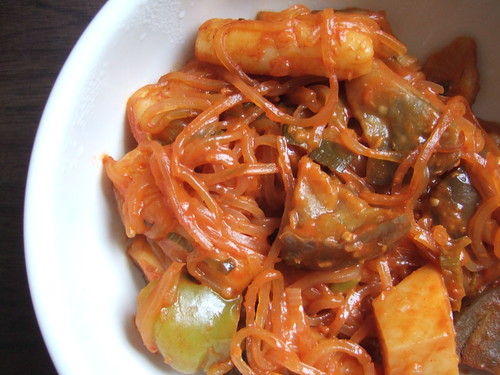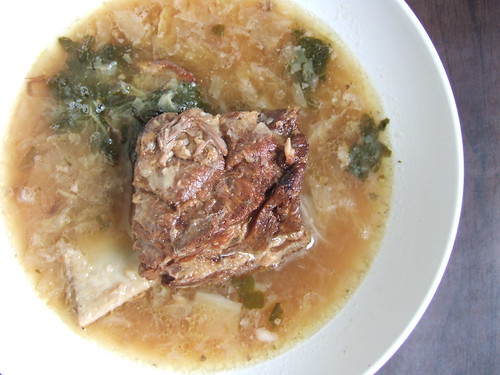‘Twas the night before Christmas, when all through the house / Not a creature was stirring,…
Are you kidding me? Whoever the author was wasn’t in my parents’ house on Christmas Eve. It’s definitely not quiet in ours right now: my mother is vacuuming, my father is moving stuff around and I’m simultaneously getting the leg of lamb and pork roast ready for our noche buena, clanging around the kitchen.
I’m not a regular churchgoer, but you can count on me to attend Christmas Eve mass even if it’s cold outside and boring inside. Because it’s also the eve of my birthday, I’ve always found mass quite comforting before I turn a year older. Wherever I am, I make it a point to attend mass for my birthday. After mass, we dive in for dinner and eat until a little after midnight–Christmas Day itself is just recovering from the night before.
This pasta e fagioli recipe, or “pasta and beans” in Italian, is a hearty (and affordable!) filler to keep the hunger pangs away at least until after church, but not too heavy that you would want to skip the main attraction on the dining table. I used Goya pinto beans here because one package was on sale for 99 cents and substituted the Parmesan cheese for Manchego.
Ingredients:
1 cup pinto beans, soaked overnight in water
2 cups mini penne pasta
4 slices bacon, chopped
3 large beefsteak tomatoes, chopped
2 stalks of celery, chopped
1 large carrot, chopped
1 red onion, chopped
2 cloves garlic, minced
1 sprig of rosemary
2 sprigs of thyme
Manchego cheese
salt, pepper1. Drain the water from the soaking beans. In a large saucepan, add 3 cups of water and bring the beans to a boil. Lower the heat and simmer for an hour, or until tender. When done, transfer beans and water to a large container and set aside.
2. Using the same saucepan, cook the bacon until crisp. Add the garlic and sauté until light brown. Add the onions and sauté until translucent. Add the herbs, carrots, celery and tomatoes and stir to combine. Cook until carrots are tender.
3. Return the beans and the water to the saucepan and let simmer for 30 minutes. Add more water if you want more soup. Season liberally with salt and pepper. Add the macaroni and simmer for another 10 minutes, or just enough to cook the pasta. Stir occasionally. Ladle into bowls and grate cheese on top before serving.
Related post/s:
The Italians know how to make peasant dishes, I tell you
A mainstay soup in our household
You say fa-zool, they say fa-joh-lee







